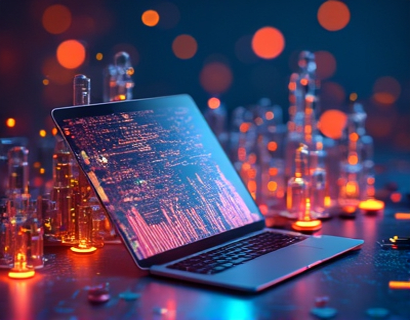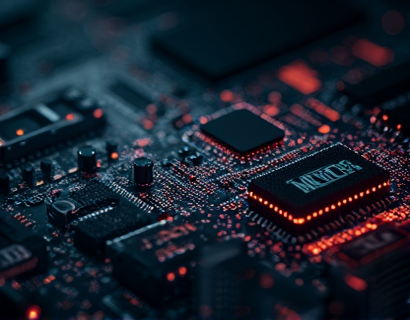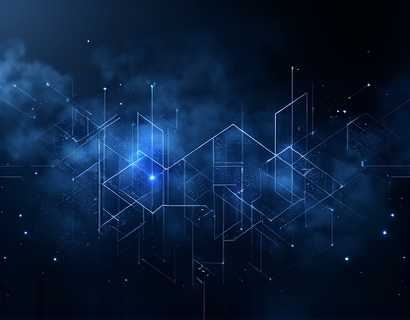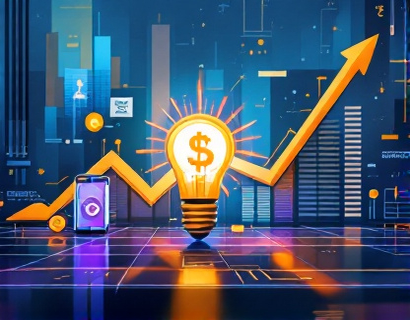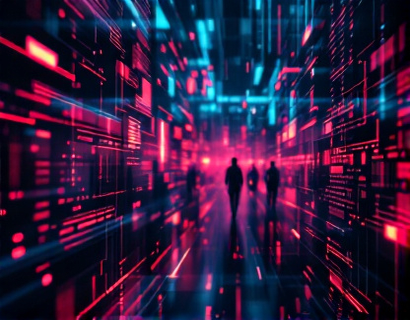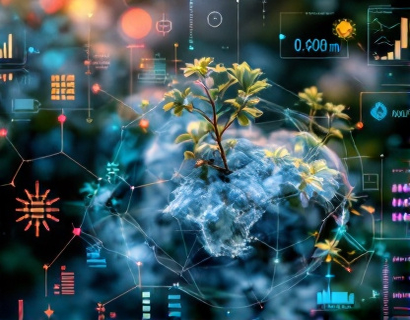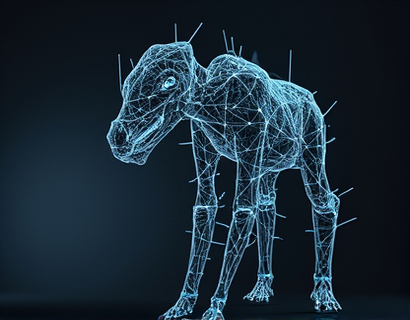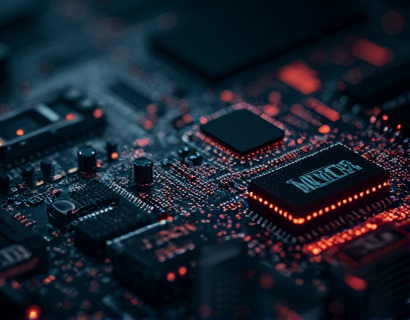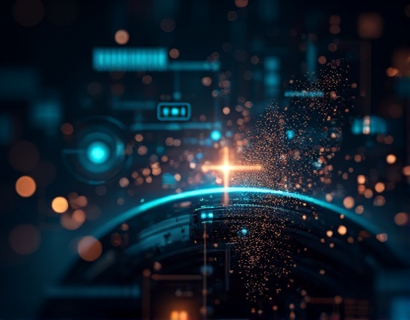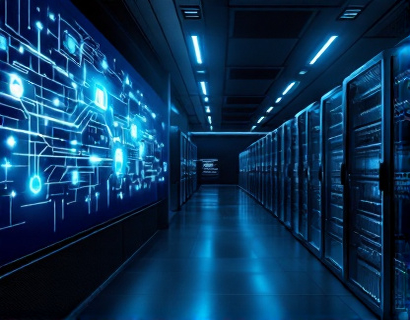Unlocking the Potential of Crypto and AI: A New Era of Productivity for Tech Innovators
The intersection of cryptocurrency and artificial intelligence (AI) is giving rise to a new generation of productivity tools tailored for tech innovators and early adopters. This fusion of technologies is not just a trend but a transformative shift that promises to simplify and enhance daily tasks, offering unparalleled efficiency and innovation. In this article, we will delve into how this integration is reshaping the digital landscape and providing cutting-edge solutions for those at the forefront of technological advancements.
Understanding the Synergy Between Crypto and AI
The combination of cryptocurrency and AI creates a powerful synergy that leverages the decentralized and secure nature of blockchain technology with the intelligent and adaptive capabilities of AI. Cryptocurrencies, particularly those built on blockchain, offer a transparent and tamper-proof environment ideal for AI applications that require trust and security. Conversely, AI can enhance the functionality and utility of cryptocurrencies by optimizing transactions, predicting market trends, and automating complex processes.
One of the key benefits of this synergy is the creation of decentralized applications (dApps) that operate on blockchain networks. These dApps can utilize AI to provide intelligent and responsive user experiences, all while maintaining the security and transparency inherent to blockchain. For tech innovators, this means access to a new class of applications that are not only more secure but also more efficient and user-friendly.
Enhancing Productivity with AI-Driven Crypto Tools
The integration of AI into crypto tools is revolutionizing the way tech enthusiasts manage their digital assets and engage with the blockchain ecosystem. AI-powered wallets, for instance, can automatically optimize transaction timing to minimize fees, predict market movements to suggest optimal buying and selling times, and even manage multiple wallets and assets with minimal user intervention. These tools use machine learning algorithms to analyze vast amounts of data, identify patterns, and make informed decisions, significantly reducing the cognitive load on users.
Another area where AI is making a significant impact is in smart contract optimization. Smart contracts are self-executing contracts with the terms of the agreement directly written into code. However, crafting efficient and secure smart contracts requires deep technical expertise. AI tools can assist in writing, testing, and deploying smart contracts by identifying potential vulnerabilities, suggesting optimizations, and ensuring compliance with best practices. This not only speeds up the development process but also reduces the risk of errors and security breaches.
Streamlining Daily Tasks with Crypto and AI Ecosystems
The ecosystem of apps and services built on the foundation of cryptocurrency and AI is designed to streamline a wide range of daily tasks for tech innovators. From project management and collaboration tools to financial management and content creation, these applications are redefining productivity in the digital age. For example, AI-driven project management platforms can predict project timelines, allocate resources more efficiently, and provide real-time insights into project progress. This level of automation and insight is invaluable for tech teams working on complex projects with tight deadlines.
Financial management is another area where the combination of crypto and AI is making a significant difference. Decentralized finance (DeFi) platforms, powered by AI, offer a suite of financial services such as lending, borrowing, and yield farming, all accessible through user-friendly interfaces. AI algorithms can analyze market conditions, suggest optimal investment strategies, and automate transactions, allowing users to focus on higher-level decision-making while the system handles the details.
Security and Privacy in Crypto and AI Solutions
Security and privacy are paramount in the crypto and AI space, and the integration of these technologies is enhancing both aspects. Blockchain's inherent security features, combined with AI's advanced encryption and anomaly detection capabilities, create a robust defense against cyber threats. AI can monitor network activity in real-time, detect unusual patterns, and trigger alerts or automated responses to potential security breaches. This proactive approach to security ensures that users can transact and store their assets with greater confidence.
Privacy is another critical concern, and the combination of crypto and AI offers solutions to protect user data. Zero-knowledge proofs, a cryptographic method that allows one party to prove to another that a statement is true without revealing any information beyond the truth of that statement, can be enhanced by AI to create more efficient and user-friendly privacy protocols. This ensures that users can maintain their anonymity and control over their data while still benefiting from the transparency and security of blockchain.
Case Studies: Real-World Applications of Crypto and AI
To better understand the practical applications of crypto and AI, let's explore a few real-world examples. One notable case is the use of AI in decentralized autonomous organizations (DAOs). DAOs are community-driven entities governed by smart contracts and AI algorithms. These organizations can make decisions based on data-driven insights, optimize resource allocation, and ensure transparent and fair governance. For tech innovators, participating in a DAO can provide a collaborative environment for developing and funding new projects, all while benefiting from the collective intelligence and security of the blockchain network.
Another example is the use of AI in crypto art and non-fungible tokens (NFTs). AI-generated art has gained significant traction, with platforms using machine learning to create unique and valuable digital artworks. These NFTs can be bought, sold, and traded on blockchain marketplaces, providing artists with a new revenue stream and collectors with unique digital assets. AI can also enhance the authenticity and provenance of NFTs, ensuring that each token has a verifiable history and value.
Future Trends: The Next Generation of Crypto and AI Solutions
As the fields of cryptocurrency and AI continue to evolve, we can expect even more innovative solutions to emerge. One exciting trend is the development of AI-powered decentralized exchanges (DEXs) that offer enhanced trading experiences. These DEXs can use AI to match buyers and sellers more efficiently, predict market trends, and provide personalized trading recommendations. The integration of natural language processing (NLP) can also make these platforms more accessible, allowing users to interact with the exchange using natural language commands.
Another area of growth is the integration of AI with the Internet of Things (IoT) in the crypto space. Smart contracts can be triggered by IoT devices, enabling automated transactions based on real-world events. For instance, a smart contract could automatically execute a payment when a sensor detects that a delivery has been made. This level of automation can significantly reduce friction and increase the efficiency of various processes, from supply chain management to smart home automation.
Furthermore, the rise of cross-chain technologies, which allow different blockchain networks to communicate and transfer assets seamlessly, is being enhanced by AI. AI can optimize cross-chain transactions, ensuring they are secure, fast, and cost-effective. This interoperability is crucial for building a truly decentralized and connected digital ecosystem, where users can seamlessly interact with a wide range of crypto and AI-powered services.
Conclusion: Embracing the Future of Productivity
The convergence of cryptocurrency and AI is ushering in a new era of productivity for tech innovators and early adopters. By leveraging the strengths of both technologies, we are witnessing the creation of powerful tools and ecosystems that simplify complex tasks, enhance security, and provide unparalleled insights. As these technologies continue to mature, the potential for innovation and efficiency gains is immense. For those at the forefront of technological advancements, embracing this new paradigm is not just an option but a necessity to stay competitive and relevant in the rapidly evolving digital landscape.



